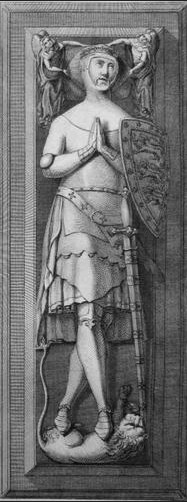John Of Eltham, Earl Of Cornwall on:
[Wikipedia]
[Google]
[Amazon]
John of Eltham, 1st Earl of Cornwall (15 August 1316 – 13 September 1336) was the second son of

 John was born in 1316 at
John was born in 1316 at
 As Earl of Cornwall, John had use of the coat of arms of the kingdom, differenced by a ''bordure France (i.e. azure semy of fleur-de-lys or)''.
As Earl of Cornwall, John had use of the coat of arms of the kingdom, differenced by a ''bordure France (i.e. azure semy of fleur-de-lys or)''.Marks of Cadency in the British Royal Family
/ref>
Lineage at British Royalty/Kings of England
* * {{DEFAULTSORT:Cornwall, John of Eltham, Earl of 1316 births 1336 deaths House of Plantagenet, John of Eltham Medieval Cornish people People from Eltham Earls of Cornwall Heirs to the English throne 14th-century English nobility Burials at Westminster Abbey People associated with Perth and Kinross Peers created by Edward III Sons of kings Children of Edward II of England
Edward II of England
Edward II (25 April 1284 – 21 September 1327), also called Edward of Caernarfon, was King of England and Lord of Ireland from 1307 until he was deposed in January 1327. The fourth son of Edward I, Edward became the heir apparent to ...
and Isabella of France
Isabella of France ( – 22 August 1358), sometimes described as the She-Wolf of France (), was Queen of England as the wife of King Edward II, and regent of England from 1327 until 1330. She was the youngest surviving child and only surviving ...
. He was heir presumptive to the English throne until the birth of his nephew Edward, the Black Prince
Edward of Woodstock, known to history as the Black Prince (15 June 1330 – 8 June 1376), was the eldest son of King Edward III of England, and the heir apparent to the English throne. He died before his father and so his son, Richard II, su ...
.
Life

 John was born in 1316 at
John was born in 1316 at Eltham Palace
Eltham Palace is a large house at Eltham ( ) in southeast London, England, within the Royal Borough of Greenwich. The house consists of the medieval great hall of a former royal residence, to which an Art Deco extension was added in the 1930s. ...
, Kent
Kent is a county in South East England and one of the home counties. It borders Greater London to the north-west, Surrey to the west and East Sussex to the south-west, and Essex to the north across the estuary of the River Thames; it faces ...
. On 6 October 1328, at the age of twelve, he was created Earl of Cornwall. Caught in the throes of the war between his father, Edward II, and his mother, Isabella, his growing years were turbulent. He was passed between his parents and was even held in the Tower of London for a time before his brother, Edward III of England, Edward III, led a coup against their mother and assumed his majority.
Information on John is scant, but by most historical accounts he was highly competent, and highly trusted by Edward. He was named "Guardian of the Realm" when Edward III was out of the country, was asked to open Parliament in Edward's absence, and was named Warden of the northern Marches, which gave him virtual autonomy in that portion of England.
As the younger brother of the English monarch, since early childhood marital negotiations were made for John: in March 1328 Edward III entered into negotiations for a marriage between his brother and María Díaz II de Haro, María Díaz de Haro, heiress of the Lordship of Biscay. By contract signed on 28 September 1334, John was then betrothed with Maria de la Cerda y de Lara, Maria de La Cerda, Lady of Lunel and daughter of Ferdinand de la Cerda, Lord of Lara, Ferdinand de la Cerda (grandson of King Alfonso X of Castile) by his wife Juana Núñez de Lara, Lady of Lara. A dispensation was sought, but the contract was abandoned when relations between Edward III and King Philip VI of France worsened in late 1334. Marie married Charles d'Évreux at Poissy in April 1335. In December 1335 were made negotiations for a marriage with Joan, Duchess of Brittany, Joan, Countess of Penthièvre and heiress of the Duchy of Brittany; however, it doesn't seem that these arrangement resulted in an official betrothal.
At seventeen he was a key commander in the Battle of Halidon Hill (1333), a devastating defeat for the Scots. Later he commanded an army in the southwest of Scotland that put down resistance to Edward Balliol, whose claims to the Scottish throne were supported by England.
According to Scottish accounts, who view John as a ruthless destroyer, he burned down Lesmahagow Priory, Lesmahagow Abbey when it was filled with people who had sought sanctuary from the wrath of the English troops. As the Scotland, Scottish chronicler John of Fordun tells it, this violation of the sacred laws of sanctuary so enraged King Edward III that he killed his own brother in fury. According to modern historian Tom Beaumont James, this tale "challenges the distinction between history and story."
John died at Perth, Scotland, Perth, probably from a fever, shortly after turning 20. In January 1337, Edward buried his brother with all honours in a beautiful Nottingham alabaster, alabaster-carved tomb in Westminster Abbey, and regularly had masses said for his soul.
Ancestry
Arms
/ref>
Notes
References
External links
*Lineage at British Royalty/Kings of England
* * {{DEFAULTSORT:Cornwall, John of Eltham, Earl of 1316 births 1336 deaths House of Plantagenet, John of Eltham Medieval Cornish people People from Eltham Earls of Cornwall Heirs to the English throne 14th-century English nobility Burials at Westminster Abbey People associated with Perth and Kinross Peers created by Edward III Sons of kings Children of Edward II of England